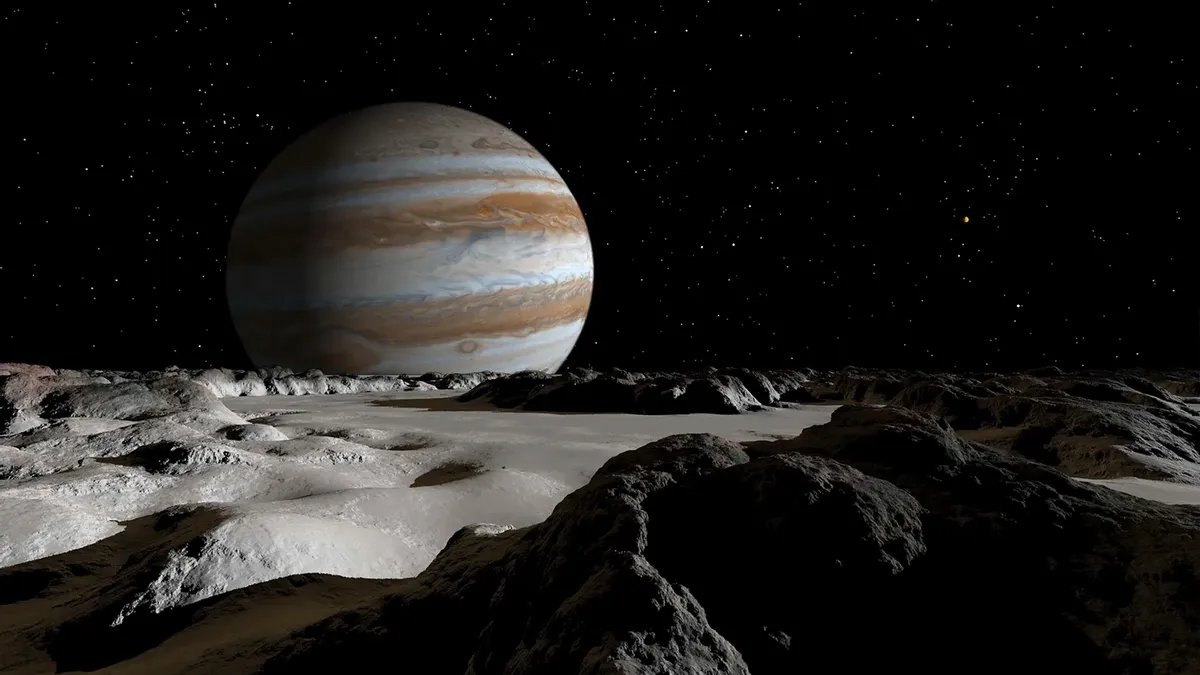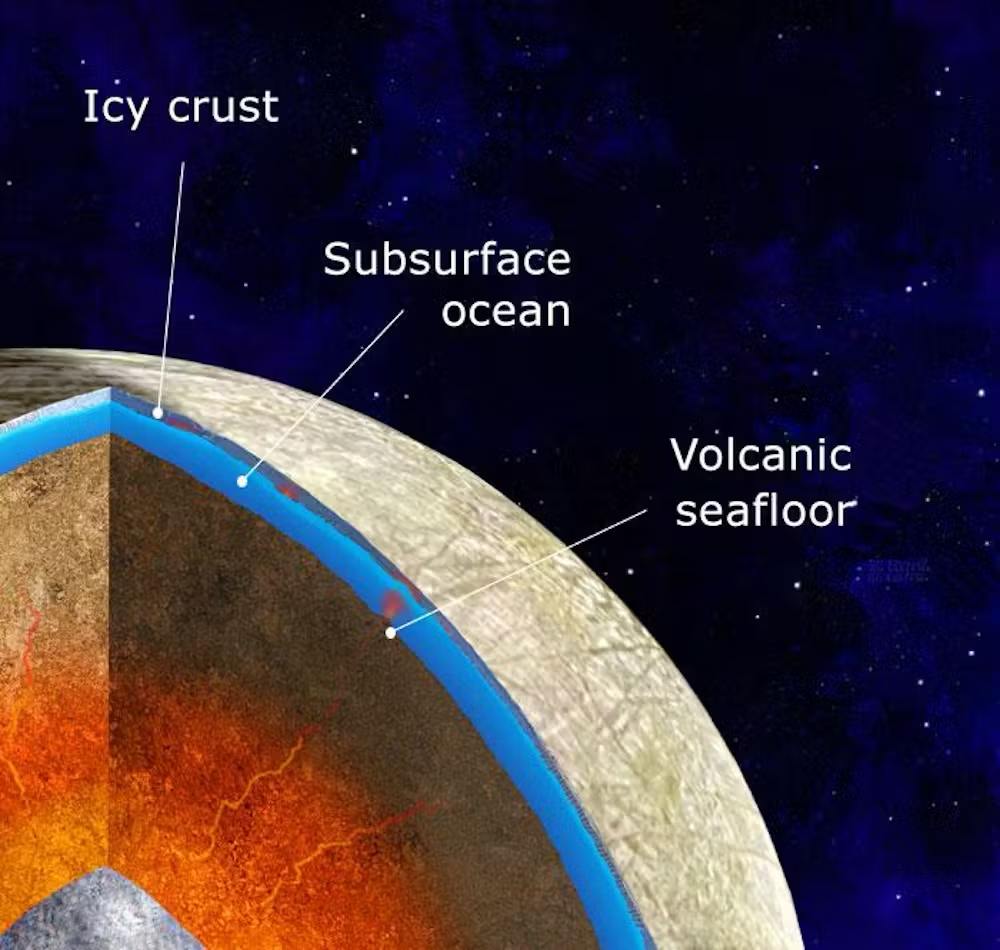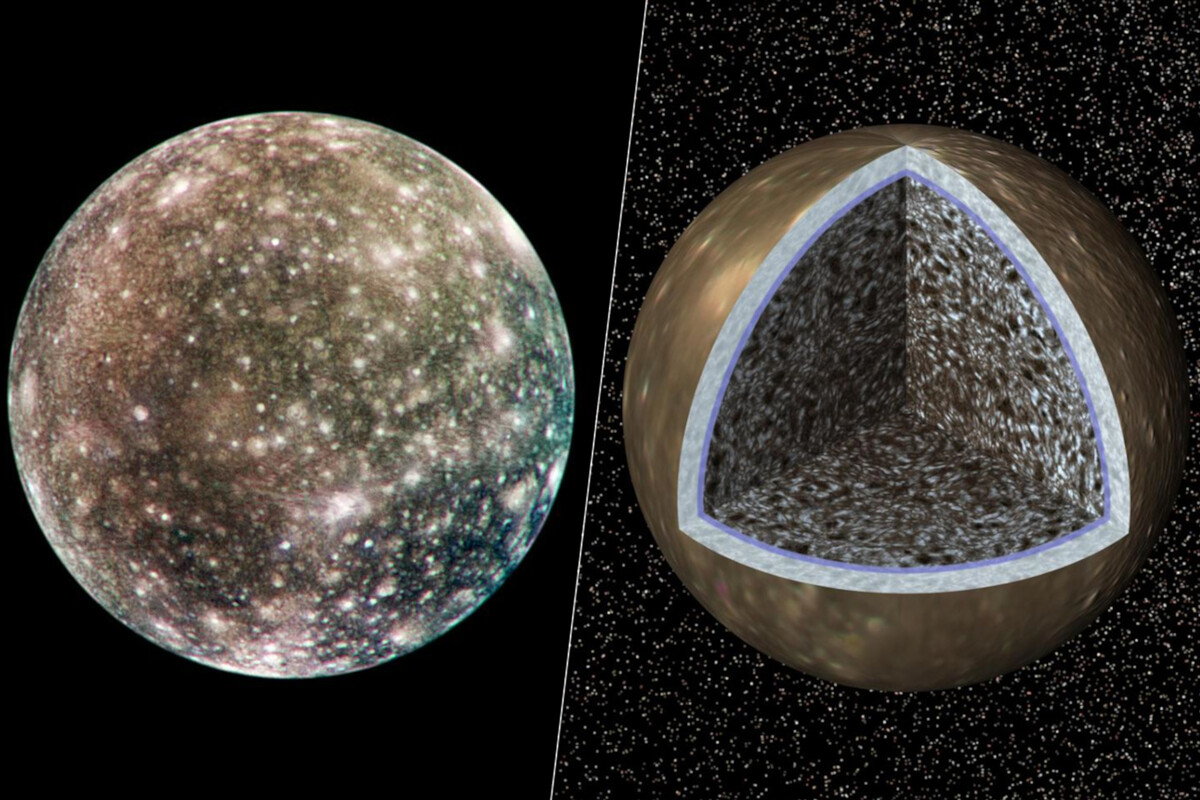We have new evidence of the existence of an ocean of liquid, salty water under the ice of Callisto
On September 21, 2003, the Galileo probe blew itself up in the dense atmosphere of Jupiter, the planet it had been investigating for almost a decade. 30 years after the probe arrived in Jupiter’s orbit and more than 20 years after the end of its mission, the NASA probe continues to offer us new information thanks to the old data it sent us back in the day.
A new ocean world. The study in question has indicated that Callisto is “very probably” an ocean world, a rocky body covered by a layer of at least partially liquid water. The key to the new study has been a more exhaustive use of the data provided by the Galileo mission, including all its magnetic measurements.
Callisto. Callisto is the most distant satellite of Jupiter among the so-called four Galilean moons. It is also the second largest moon of Jupiter, with a size similar to that of Mercury but with a significantly lower mass.
One of the most striking details is its crater-filled surface, which gives Callisto an appearance “similar to a golf ball”. The suspicion that this satellite hides an ocean inside it is not new, but the intensity of its ionosphere had limited our ability to study the interior of the Jovian moon from a distance.

The reason is that researchers believed that the satellite’s ionosphere, an electrically conductive region located in the highest layers of Callisto’s atmosphere, could be “imitating” the magnetic signature that a hypothetical ocean of conductive saltwater would emit. In other words, astronomers could not tell whether the detected magnetism came from the moon’s exterior or interior.
A new look. New data and new analysis tools have made it possible to resolve this question. The team responsible for the new study incorporated all the available magnetic measurements from the eight occasions on which the Galileo probe flew over Callisto.
Combining methods. The team combined the analysis of the data obtained by Galileo with a model that simulated the ionosphere of Callisto. They compared the results of the observations with what was suggested in the theoretical model.
Based on the results obtained, the team responsible for the study concludes that the satellite’s ionosphere cannot alone explain the detected magnetism, but that the existence of a saltwater ocean beneath the moon’s surface could contribute to the observations. The results therefore suggest the existence of such an ocean.
The details of the analysis and its results have been published in an article in the journal AGU Advances.
The ocean worlds of our solar system. Callisto is just one more on the list of candidates for ocean worlds in our solar system, a list that includes different bodies in which we believe, with varying degrees of certainty, that oceans exist. This list includes other moons such as Europa, Ganymede, Enceladus, Triton, and also a dwarf planet: Pluto.

These planets are of great interest to astrobiology since they are the main candidates to harbor life or the right conditions for it to emerge in our space neighborhood. That is why a whole new generation of probes is focused on the study of these types of environments.
The list includes NASA’s Europa Clipper mission and the European Space Agency’s JUICE (Jupiter Icy Moons Explorer). The first will focus on an in-depth analysis of the moon Europa, while the European mission will travel to several of these icy worlds to gather information about what lies beneath their layers of ice. The Chinese Tianwen-4 mission could also be added to these missions, whose observations could also provide us with important data about Callisto and its hidden ocean.









